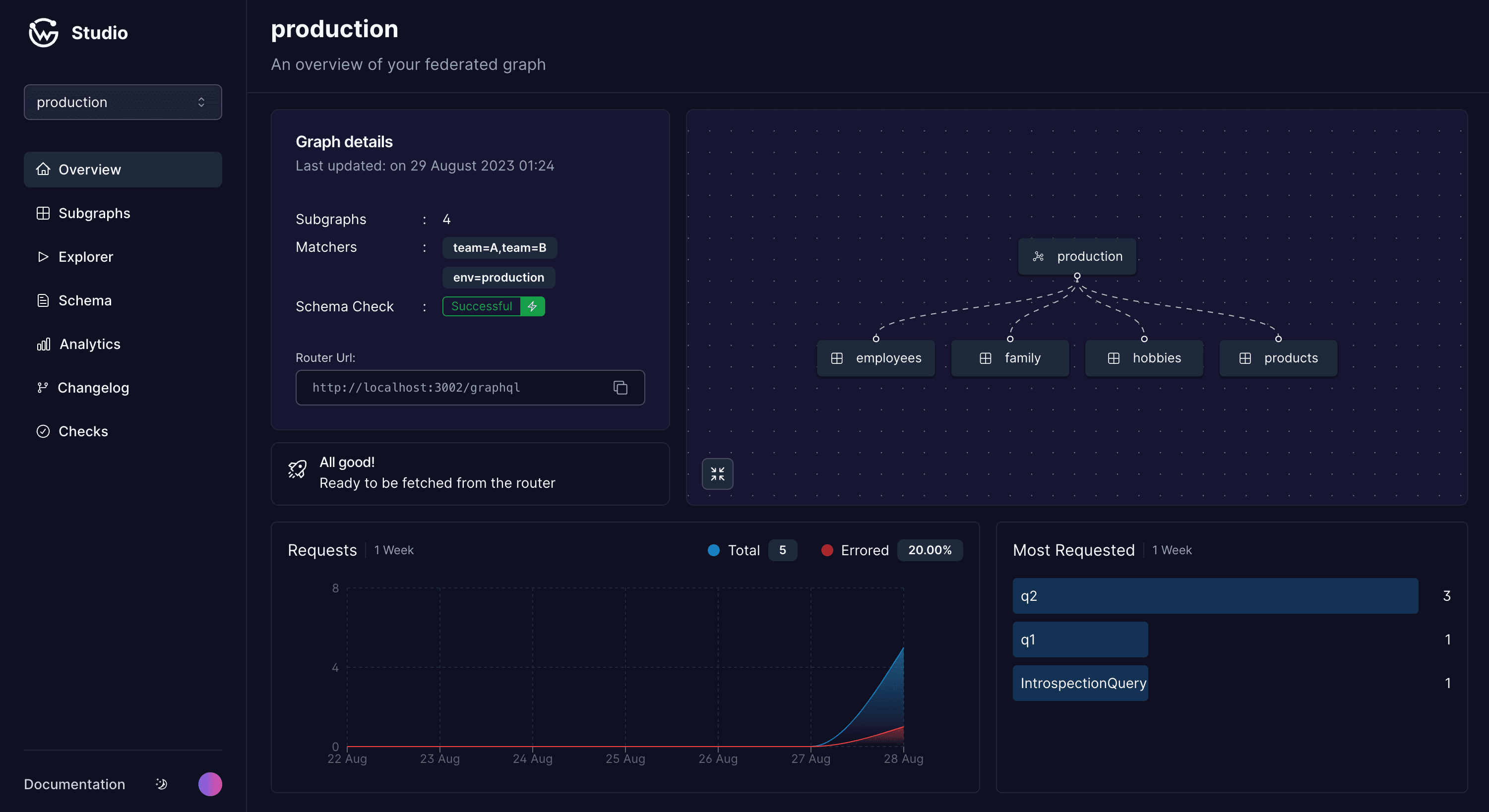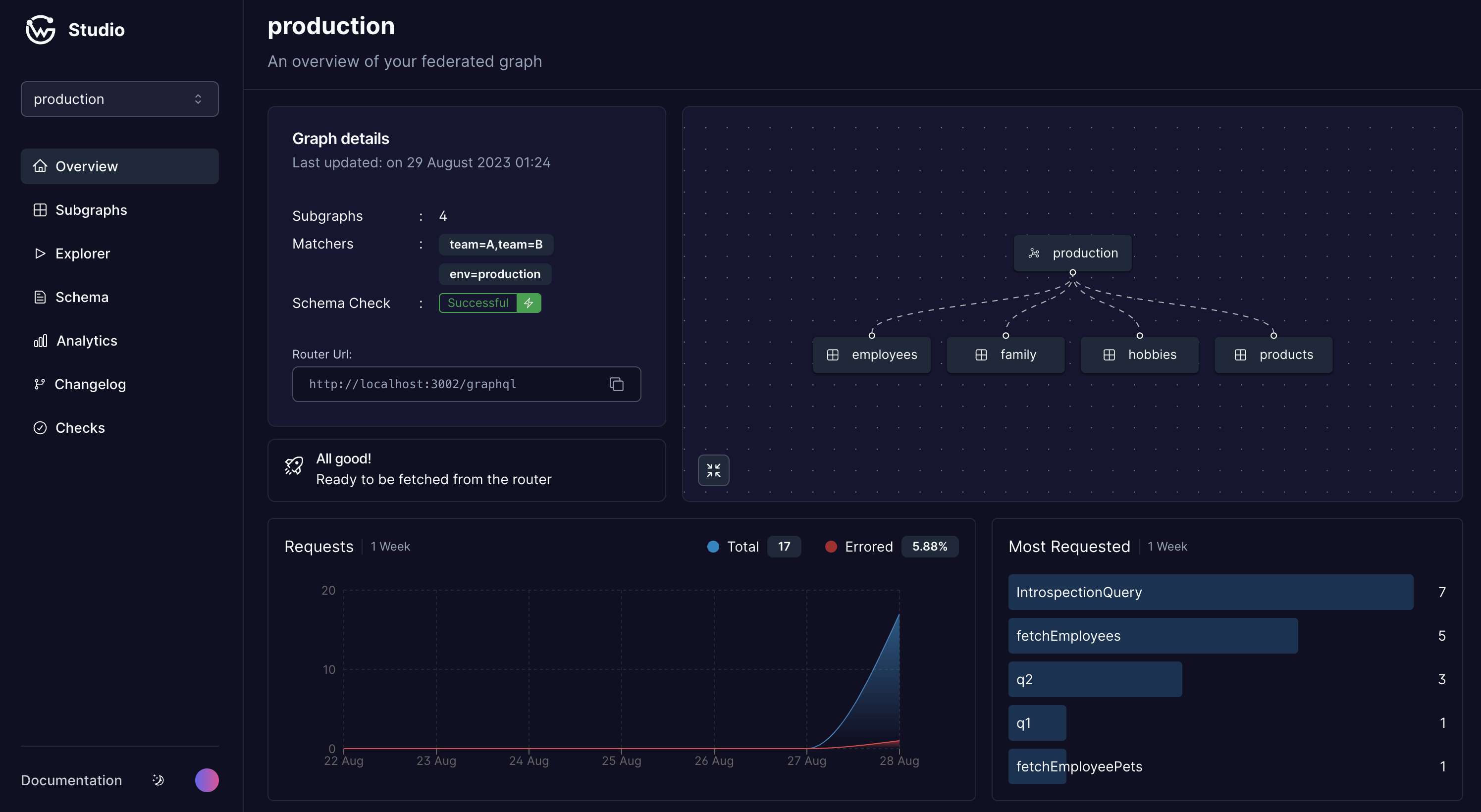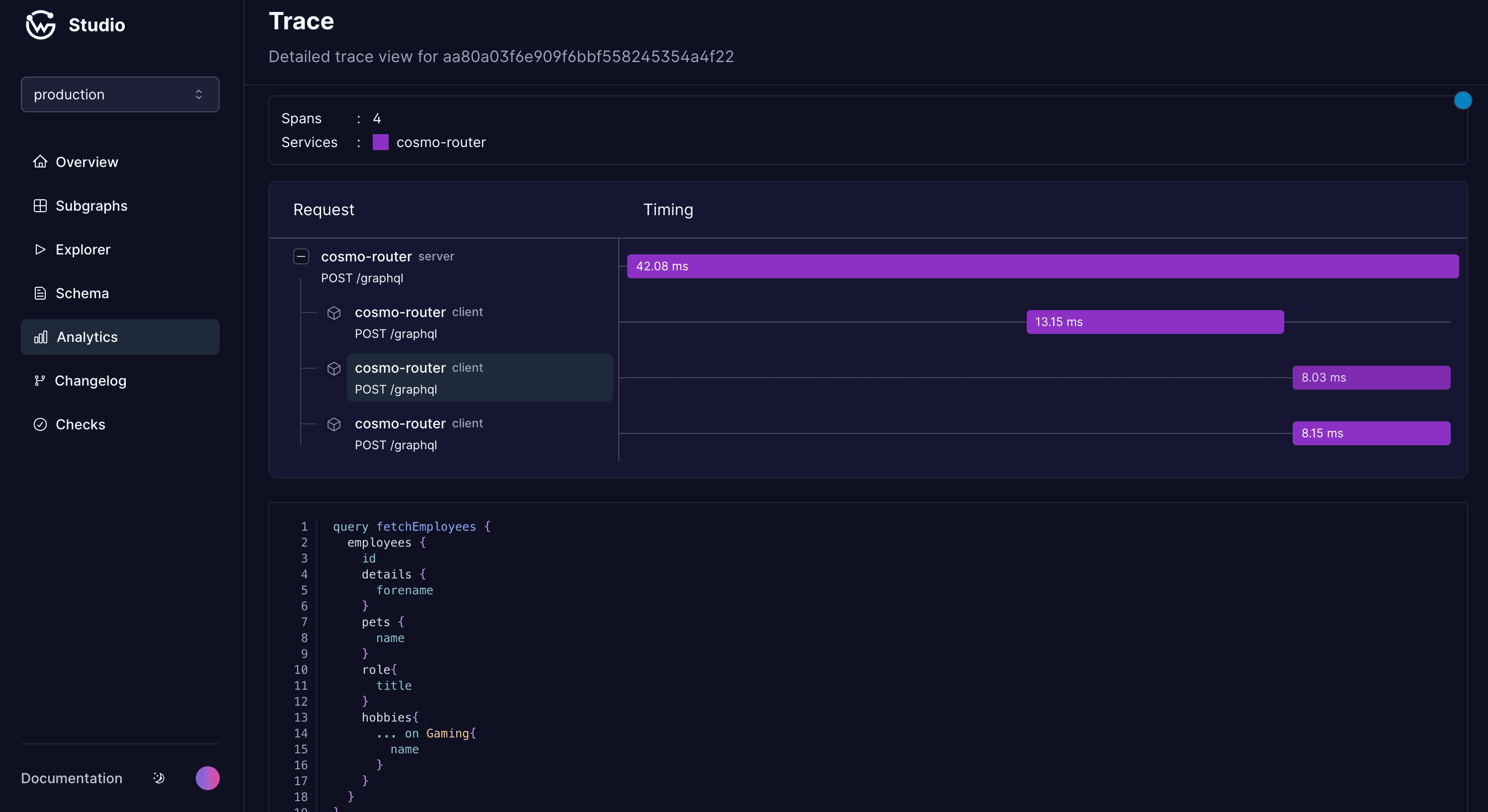- Published on
An Introduction to WunderGraph Cosmo: The Future of Federated Graphs in Enterprise
- Authors

- Name
- Andrew Blase
Introduction
Hey there, GraphQL enthusiasts and enterprise leaders! 🌟 If you've been navigating the labyrinthine world of GraphQL services in large enterprises, you're in for a treat. Meet WunderGraph Cosmo, a revolutionary solution that's set to redefine how we manage GraphQL services. In this article, we'll unpack the features that make Cosmo a true game-changer and compare it with another industry giant, Apollo GraphOS. So buckle up, because we're about to take a deep dive!

Overview: The Cosmo Stack
WunderGraph Cosmo isn't just another tool in the GraphQL ecosystem; it's a full-fledged GraphQL API Management Solution. Designed to manage Federated Graphs at scale, Cosmo offers a range of features from composition checks to analytics and distributed tracing. What sets it apart is its flexibility: you can run Cosmo locally, in the cloud, or even on-premises. And it's not just for federated graphs; Cosmo supports monolithic GraphQL APIs as well as Federation v1 and v2, including Subscriptions.
The Cosmo Stack Components:

- CLI (wgc): This is your command center for everything Cosmo. From pushing schemas to validating them and managing users, the CLI is incredibly versatile.
- Control-Plane: Think of this as the brain of Cosmo. It consists of the Platform API and the Node API, each serving a unique function in managing the platform. The Platform API is utilized by the Cosmo CLI tool and Studio for platform management. On the other hand, the Node API facilitates fleet-specific operations, carried out by the Router nodes.
- Router: This is the workhorse that takes care of routing requests to the appropriate subgraphs.
- Studio: This is where the magic happens. The Studio serves as your web interface for managing and collaborating on GraphQL Federation.
The Architecture of Cosmo: Built on Key Principles

The architecture of Cosmo is nothing short of revolutionary, founded on several key principles that set it apart:
Key Principles:
- Open Source: Cosmo is built on open standards like Open Telemetry (OTEL), S3, and Prometheus. This means you're not locked into a proprietary ecosystem. The Router is "source-available" under the open source license, allowing for extensive customization.
- High Availability: One of the standout features of Cosmo is its focus on minimizing downtime. The Router is engineered to function independently. Its only dependency is on the CDN to load the configuration, which ensures an uptime of 99.999%.
- Cost-Efficiency at Scale: Cosmo is not just scalable; it's cost-efficient at scale. It's designed to handle even the most demanding use cases, capable of managing multiple billions of requests per month.
- Hybrid Deployments: Flexibility is key in today's fast-paced tech environment. Cosmo offers you the option to run the entire platform on your own infrastructure, ensuring 100% data sovereignty. Alternatively, you can use Cosmo's cloud services for the more complex "stateful" components.
- Optimized Solution: Cosmo's components are engineered to work in perfect harmony. This holistic approach not only optimizes operations but also significantly enhances the development experience.
What is WunderGraph Cosmo?

WunderGraph Cosmo is more than just a GraphQL tool; it's an entire ecosystem designed to meet the needs of large enterprises. Imagine a world where your control plane, router, and subgraphs all work in harmony. That's the world Cosmo aims to create. It's designed to manage large federated graphs efficiently, making it an indispensable tool for any enterprise looking to scale its GraphQL services.
Why WunderGraph Cosmo is Exciting for Enterprises

If you've ever found yourself thinking that large federated graphs are a challenge to manage, Cosmo is here to change your mind. It offers unparalleled scalability, allowing you to handle thousands of queries per second without breaking a sweat. But it's not just about handling queries; Cosmo offers real-time metrics and telemetry, giving you a bird's-eye view of your operations. And let's not forget about observability; with Cosmo, you'll know exactly what's happening under the hood at all times.
Observability and Telemetry

In the modern enterprise landscape, data is more than just a resource; it's a strategic asset. Cosmo understands this, offering unparalleled insights into your GraphQL operations. From detailed metrics to real-time telemetry, Cosmo gives you the tools you need to monitor, analyze, and optimize your operations.
Comparison with Apollo GraphOS
So how does Cosmo stack up against Apollo GraphOS? While GraphOS offers features like a schema registry and cloud routing, Cosmo takes it a step further. Its open-source capabilities and focus on large federated graphs make it a compelling choice for enterprises looking for a scalable, flexible solution.
Security and Compliance
In today's digital landscape, security is not just a feature; it's a necessity. Cosmo understands this, integrating security measures into the very core of its platform. From identity provider integrations to robust access controls, Cosmo offers a secure, compliant solution for managing your GraphQL services.
Conclusion
There you have it! WunderGraph Cosmo is not just a tool; it's a revolution in the way we manage large federated graphs. With its robust architecture, scalability, and focus on security, it's a must-have for any enterprise looking to optimize its GraphQL services. Don't just take our word for it; check it out yourself!